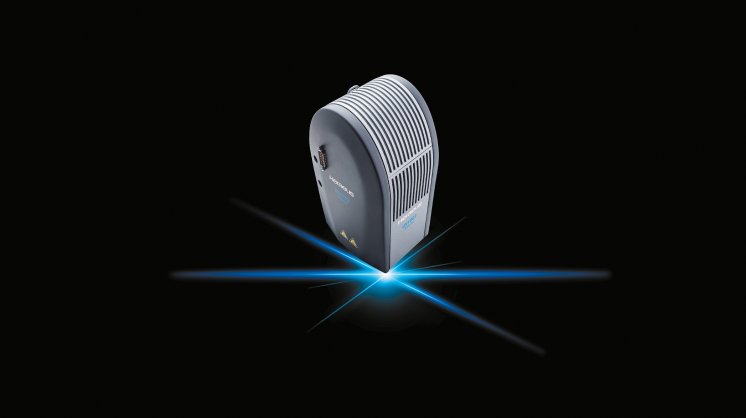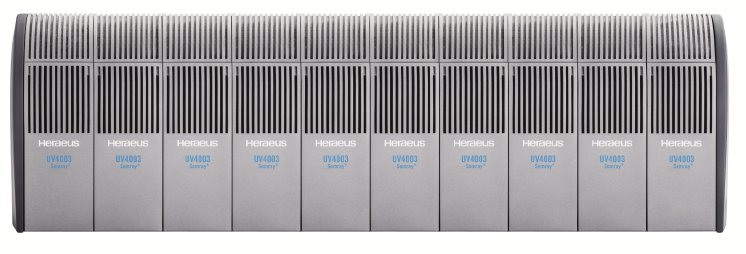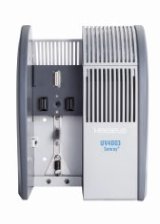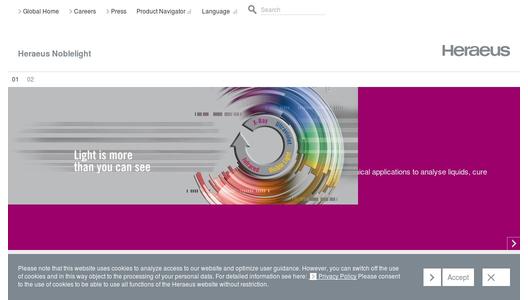Industrial printing and curing processes are complex and require a lot of experience and application know-how. Everyone knows how important a reliable curing system is that also helps minimize down time and still delivers brilliant quality. Especially today, processes must be even more efficient and time-saving. Heraeus Noblelight has combined its competencies in the field of handling and production of specialty light sources: "We have accepted the challenges presented to us by our customers and developed Semray®, a functional and multifaceted system, which is easy to handle and integrate", explains Dr. Michael Peil, Head of Optoelectronics at Heraeus Noblelight. "The new LED system is versatile, applicable, and fulfills many different curing process requirements, without sacrificing quality and performance." The new UV LED system celebrates its premiere at Drupa, the international trade fair for the printing industry, held the beginning of June and offers five important requirements.
The first challenge: productivity
Conventional UV LED systems are permanently installed in production processes. For servicing or in the event of a malfunction, the entire system needs to be dismantled, which is costly and time-consuming. Semray® simplifies the matter: Its unique backplane concept (modular concept) allows installation and removal of UV LED segments in a plug&play manner. The UV LED segments can be replaced without the use of tools; no data or power supply cables need to be disconnected, because each backplane has just one data and just one power supply cable. Downtimes will be minimized and the use of the UV LED system can be maximized. This saves not only time, but also money, since there is no need for expensive servicing work, thereby increasing productivity and making integration of the UV LED system into the plant considerably easier.
The second challenge: UV output
The formula is very easy: more UV LED chips built into the unit means more power. However, what sounds easy is difficult to implement, because, in practice, space is limited. So, the challenge is to generate as much UV output as possible on the smallest possible area, keeping heat generation low at the same time. Semray® features special micro-optics that bundle radiation and reduce stray light to a minimum. In this way, substantially more UV energy gets to the product resulting in considerably high and constant UV output which optimizes the curing process. Even with large working distances the quality stays the same. "The interaction of all these features and also the ability to dim the LEDs offer an additional benefit for our customers", comments Dr. Peil, "thereby the UV output can exactly be adapted to the application."
The third challenge: retrofit and upgradeable
The UV LED chip market is developing rapidly. At the end of its service life, a conventional LED requires a complete system replacement. With Semray®, Heraeus banks on upgradeability. Individual UV LED segments can easily be replaced within the entire system. Even individual UV LED channels can be exchanged. This makes conversion and upgrading to latest UV LED technology or other wavelengths even more economical. The expense for this state-of-the-art technology remains reasonable because individual components can be reused after an upgrade.
The fourth challenge: flexibility
The tasks of UV LED systems are extremely varied and diverse. Curing processes require different machine widths and working distances between the individual LEDs. With far-reaching consequences. Currently, a matching UV LED had to be used for each product width. This makes warehousing complex and expensive. Semray® gives 'freedom'. Due to the modular design and the revolutionary plug&play backplane concept, the UV LED system can flexibly be adjusted to any curing task, and not the other way round. Everything is possible, from reducing the machine width to changing the wavelength as well as from extending the working distance to increasing process speed. The UV LED segments, each with a working width of 77 cm, can be easily installed in or removed from the backplane, or controlled individually. "With Semray®, our customers can react very fast to changed curing requirements, can optimize the solution for their clients, and can expand their own business model as desired," says Dr. Sven Schalk, President, Heraeus Noblelight America LLC.
The fifth challenge: performance
Curing systems must be able to cope with the heavy strains of everyday production. Performance and service life of the UV LED systems are influenced by cooling and the bonding of the chips on the substrate and other factors. Semray® achieves exceptional performance thanks to the combination of advanced materials along with state-of-the-art design and unique technology know-how.
The outstanding performance is guaranteed by the in-house development of the micro-optics, our own chip-on-board production and our proprietary system development and manufacture at Heraeus. The self-regulating cooling also contributes to the performance increase. The more homogeneous and more stable heat management of the SFC (Self-regulating Fan Control) is based on CAE simulations (Computer-Aided Engineering). Combined with the best heat transfer pastes from the Heraeus Group and other assembly and connection materials the system provides an optimal temperature. Additionally, it improves the results of the curing process and extends the service life of the UV LED system. In combination with the quartz glass plates, the easy-to-operate and very intelligent monitoring of temperature and influencing variables makes the UV LED robust and durable - and hence stable for industrial but also individual applications. "It is the simple things that make our lives easier. Therefore, we have combined the complexity of LED technology with easier operability to offer a user-friendly UV LED system to our customers", summarizes Dr. Sven Schalk.
Heraeus presents Semray® for the first time at DRUPA in Düsseldorf, Germany, May 31st - June 10th, 2016. (Hall 3, booth D44).
From ultraviolet to infrared - experts consult on how curing and drying processes can be increased and made much more efficient.




